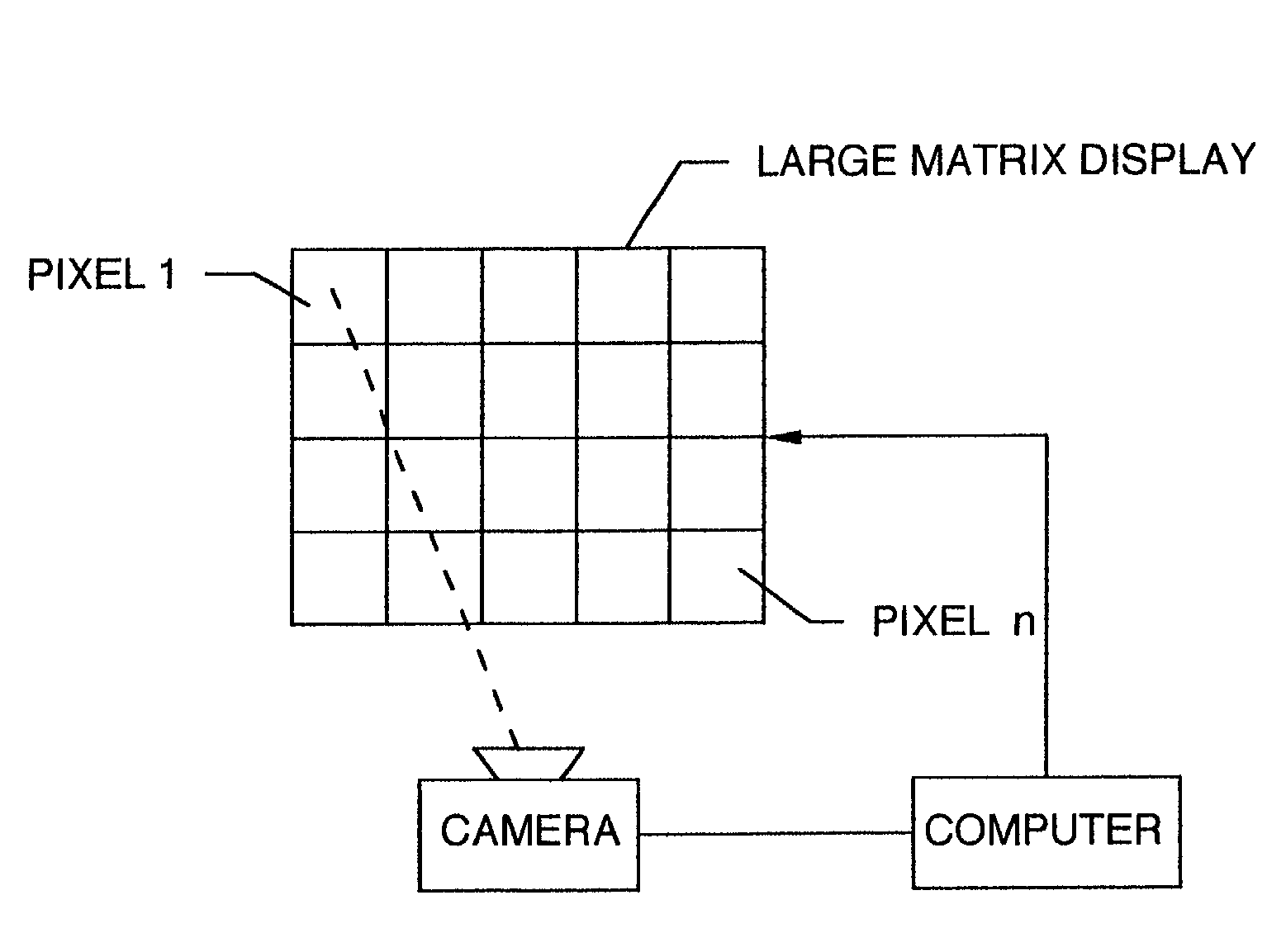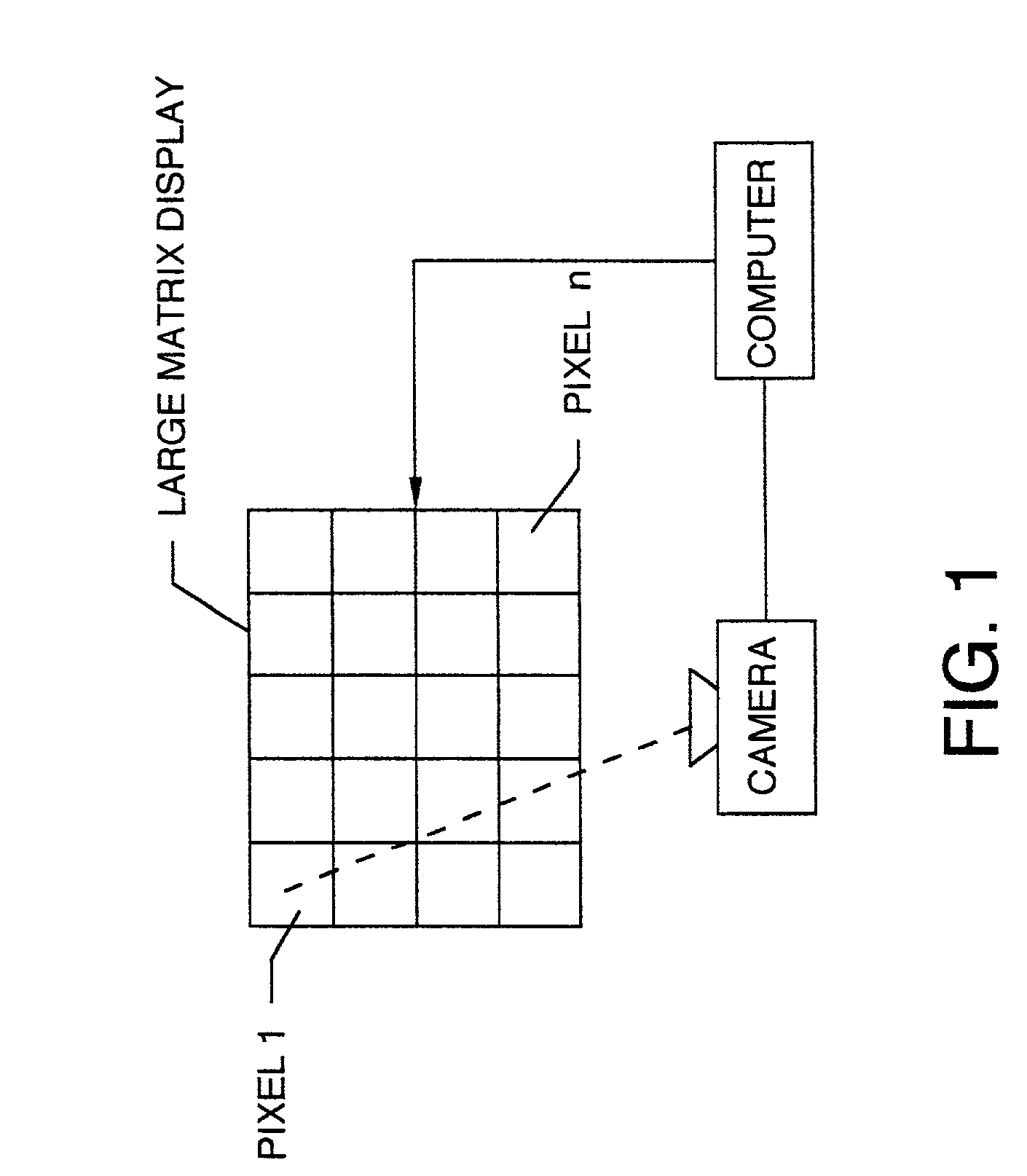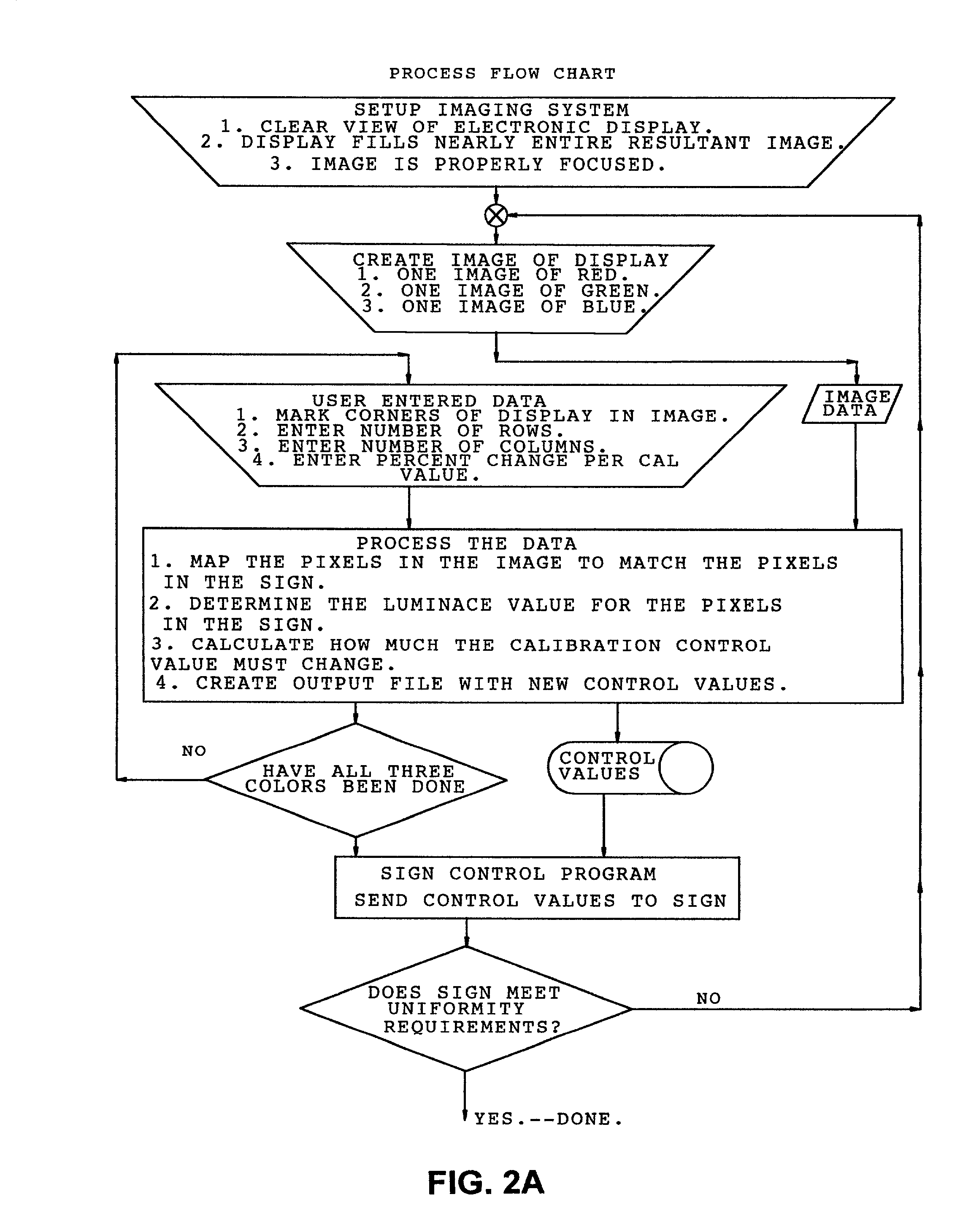Calibration system for an electronic sign
a technology of electronic signs and calibration systems, applied in the field of electronic sign calibration systems, can solve the problems of easy problems creeping into the process, time-consuming individual calibration of thousands of pixels, and all display technologies used to date slowly lose intensity, so as to reduce the chance of eyestrain, less input, and the effect of reducing the chance of human error
- Summary
- Abstract
- Description
- Claims
- Application Information
AI Technical Summary
Benefits of technology
Problems solved by technology
Method used
Image
Examples
Embodiment Construction
[0024]The imaging system must either produce a color image or use the proper filters to produce a monochrome image. In addition, the imaging system must be of high enough resolution that each pixel in the sign or section of sign is represented by multiple pixels in the imaging system. Finally, the imaging system must have lenses which allow the sign section of interest to nearly fill the available image area of the imaging system. The imaging system is then used to obtain three digital images of the sign. These images are of the entire sign displaying each of the three colors, red, green and blue. These images are then transported to the personal computer.
[0025]The personal computer contains software which interprets the image data from the imaging system and through the use of user supplied parameters uses a formula to convert the image data into control data which corresponds exactly to each display element in the display. This control data will be sent to the electronic sign and ...
PUM
 Login to View More
Login to View More Abstract
Description
Claims
Application Information
 Login to View More
Login to View More - R&D
- Intellectual Property
- Life Sciences
- Materials
- Tech Scout
- Unparalleled Data Quality
- Higher Quality Content
- 60% Fewer Hallucinations
Browse by: Latest US Patents, China's latest patents, Technical Efficacy Thesaurus, Application Domain, Technology Topic, Popular Technical Reports.
© 2025 PatSnap. All rights reserved.Legal|Privacy policy|Modern Slavery Act Transparency Statement|Sitemap|About US| Contact US: help@patsnap.com



